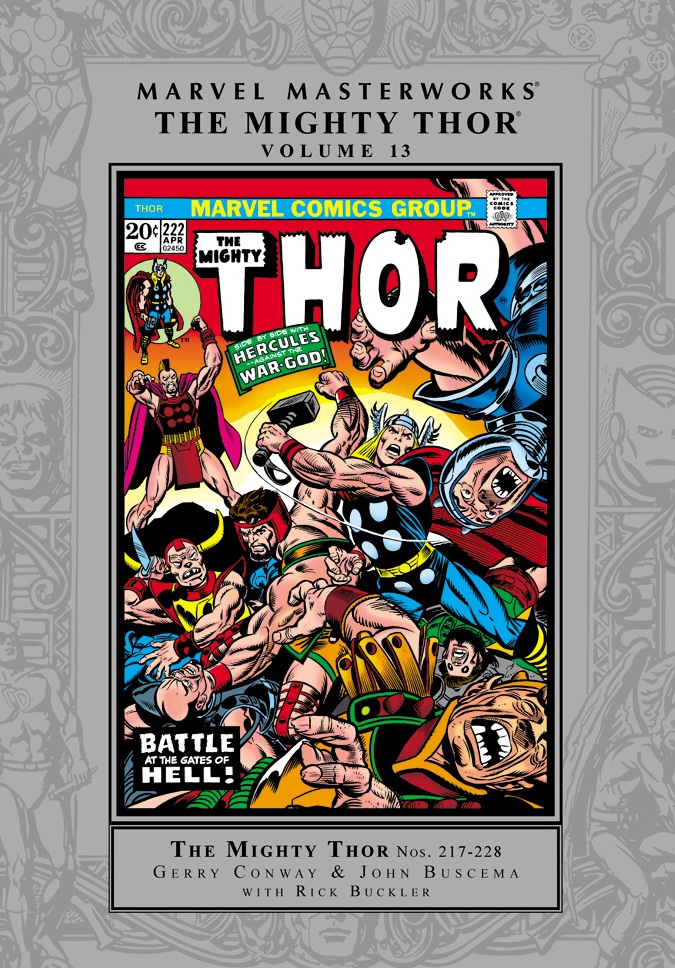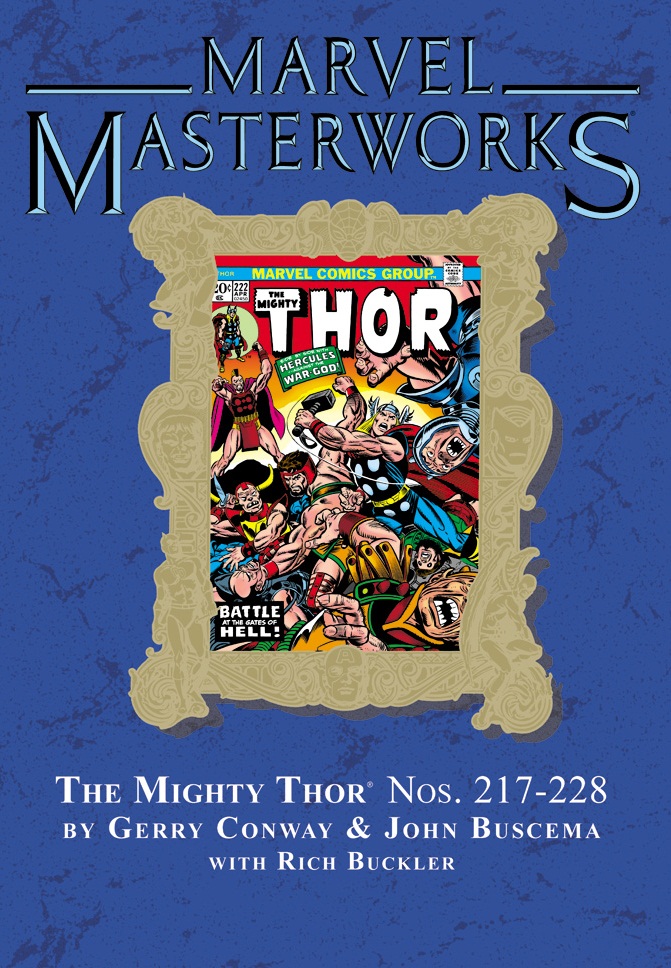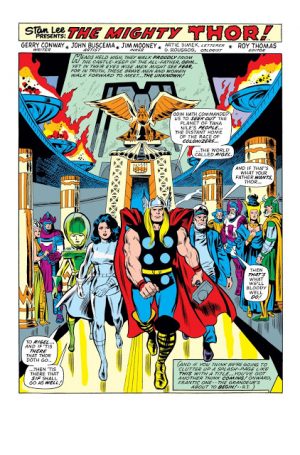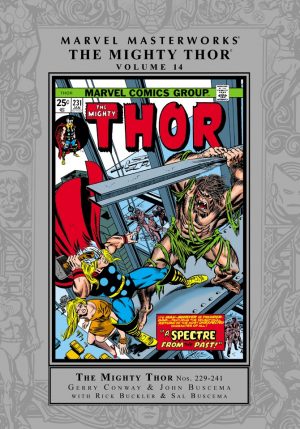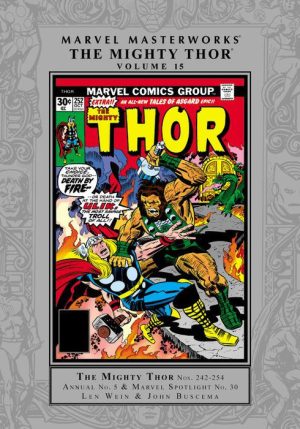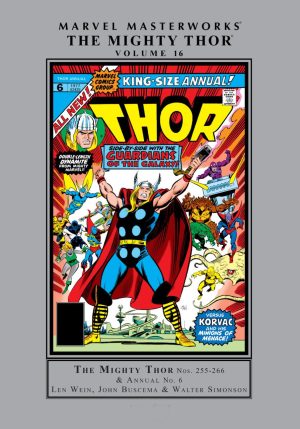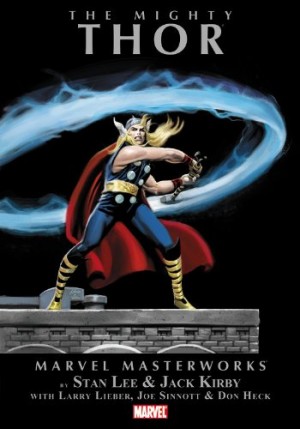Review by Ian Keogh
This third Masterworks collection of Gerry Conway’s work on Thor features stories from 1973 and 1974, opening with a mystery, continuing with the best of Conway’s run, then rather petering out into average material.
The book opens with the triumphant return of Thor, Odin and other Asgardians after the trials witnessed in volume 12, only to discover they’re already there. The mystery becomes who these imposters are. The best story concerns the Black Stars, enormous moving planets menacing the world of the technologically advanced Colonizers. The threats escalate over two chapters before the big reveal, a gimmick using what’s been a now clichéd shock ending to many a science fiction short story over the years, but worked into the greater plot extremely well. Thor and his allies are faced with foes on such a scale even Thor’s power is negligible, and communication is impossible.
All the remaining plots have interesting elements. There’s a decidedly different end to a sequence featuring the invincible Destroyer, but getting there shows little imagination. The return of Hercules is welcome, yet the three chapters of this story are padded with predictability, and the supposition is that it wasn’t particularly original at the time either. Firelord is a visually striking design, and his imperious attitude contrasts the Silver Surfer’s hand-wringing as a herald of Galactus, which is good, as is the origin of Ego the Living Planet, but they feature in four chapters that re-tread old ground, and not as well.
While Conway’s plotting goes off the boil, there’s no doubting the continuing quality of John Buscema’s art, but by the high standards set over the previous two volumes he’s coasting. Instead of including single page pin-up images, several chapters here include two-page spreads, but they’re without the grace and elegance supplied by Buscema at his best. The exception is a stunning spread of Galactus arriving on Earth, and his splash pages remain excellent. Most of the inking is the work of Mike Esposito, and the result is okay, but not as dynamic as Buscema can be. Contrast that with the single chapter inked by Joe Sinnott, and how much better that looks. Marvel’s editorial policy of the time is puzzling, as the difference is obvious, but Esposito is back the following episode. Yet, as was the case with Jack Kirby years previously, the replacement artist, now Rich Buckler, is allocated Sinnott to ink his pencils. The Buckler of 1974 put far more effort into his work than in later years, and he ensures a visual consistency.
Buscema returns for Conway’s final work on Thor in volume 14. This content is also available spread across volumes 5 and 6 of Essential Thor, but in black and white.
